VIETNAM | Temple Run and Museum Hopping at Hoi An
Sunday, August 06, 2017
While temples and museums are alright with us, visiting a slew of them in one go is simply too much. We’ve had our fair share of temple runs in Siem Reap, Chiang Mai, Chiang Rai, Ayutthaya, Penang, and Yogyakarta, and we always felt, well, ran out, afterwards. It was too much of a sensory overload. This time, we’re having it at, of all places, Vietnam. I’d never thought there’d be that many temples (and museums) in a single area on a socialist country like Vietnam.
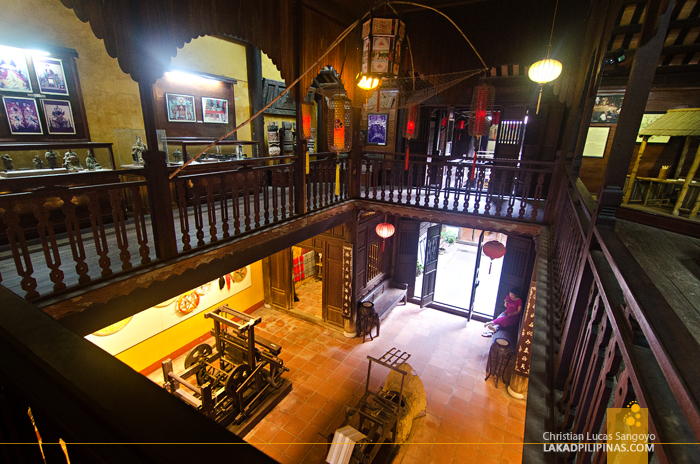 |
| INSIDE ONE OF THE MANY MUSEUMS IN HOI AN |
We never really signed up for this, it was totally forced on us. While entering the Hoi An Ancient Town, we were stopped by a guard and was asked to buy a ticket containing five entrance stubs to any temples, museums, or workshops we would like to go for VND120,000.00 (USD5.30 | PHP270.00). They didn’t tell us we don’t really need this to enter old town. And should they have, we would have entirely forgone this part of our Hoi An tour.
 |
| EVENINGS AT HOI AN RIVERSIDE |
So there we were, ripped off and confused on where we would use our tickets. Hoi An has multitudes of temples and museums, and choosing which one to enter was a daunting task in itself. We went to Google to help us form our initial list and let our gut finalize it; some places looked good on paper, or in this case, our mobile screen, on real life, it really didn’t really get us that excited.
Not that we’re really excited on the prospect of visiting five museums in a single afternoon. Again, we didn’t sign up for this!
QUAN QUANG TRIEU ~ CANTONESE ASSEMBLY HALL
ADDRESS: 176 TRAN PHU STREET, HOI AN | OPENING HOURS: 8:00AM-5:00PM | ENTRANCE FEE: TICKET STUB | GPS: 15.877175, 108.326499
The Cantonese Assembly Hall is regarded as one of the most famous historical buildings in all of Hoi An. Constructed in 1885 by Chinese merchants from Guangdong Province—formerly Canton, hence the name—that found themselves at the trading port of Hoi An. This place serves as their resting area, meeting point, and worship hall.
This temple complex, like most at the old town, is quite small. Entering an ornate three-entrance paifang, visitors are welcomed by a dragon sculpture seemingly playing with a fish on a reflecting pool. This is surrounded on two sides by porticos and faced with a small robust central temple.
At the back garden, another dragon sculpture emerges from the water, more ornate than the former and with several heads. Facing it is a replica of the iconic Five Rams statue of Guangzhou’s Yuexiu Park.
It’s interesting to note that while all these are assembled in Hoi An, the materials were all constructed and completed in China before being shipped to Vietnam.



QUAN THANG ANCIENT HOUSE ~ DUC AN OLD HOUSE
ADDRESS: 129 TRAN PHU STREET, HOI AN | OPENING HOURS: 8:00AM-9:00PM | ENTRANCE FEE: BY DONATION | GPS: 15.877018, 108.327559
We watched a couple, dressed in bright red traditional Vietnamese garb, have their photo shoot along the courtyard of the old house. They fitted like a tee with the antiquated surroundings.
Duc An Old House is a traditional Hoi An two-storey shophouse built in 1850. It has a long and narrow plan fronted by a shop, a courtyard at the center, workspace—like the kitchen—at the back, and living halls at the second floor.
It’s one of the more legit shophouses of its kind, being lived on by the same family for over four centuries. I like how the owner, Mr Phan Ngoc Tram, has resisted the trend of converting his ancestral house into another souvenir shop. Here, you can still see vestiges of how life was during Hoi An’s trading days.
And indeed, this place is packed with history. In 1908 it was converted as a Chinese medicine dispensary, and after which, it became a renowned bookshop selling Chinese, Vietnamese, and books by international thinkers like Rousseau and Voltaire. This attracted the attention of local intellectuals and became the center of the anti-French movement in Hoi An.

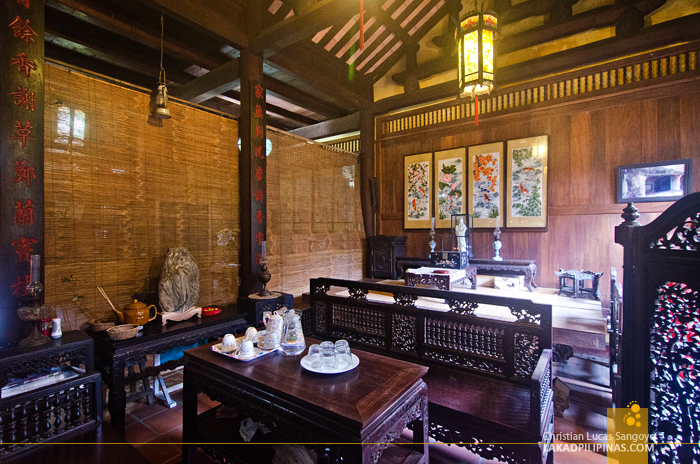
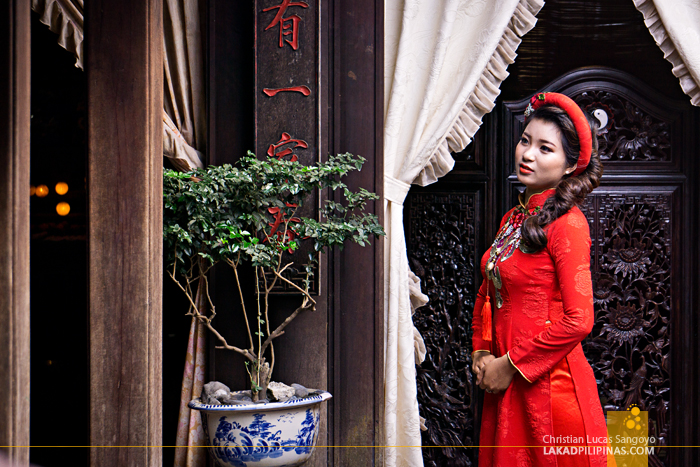
MUSEUM OF TRADE CERAMICS
ADDRESS: 80 TRAN PHU STREET, HOI AN | OPENING HOURS: 8:00AM-5:30PM | ENTRANCE FEE: USE STUB | GPS: 15.877327, 108.329515
Still on Tran Phu Street, we entered another two-storey dark wooden structure housing the Museum of Trade Ceramics. Typical of colonial buildings during Hoi An’s heyday, it was built in 1858, restored 117 years later, and opened as a museum dedicated to nothing but ceramics.
It houses around 430 ceramic artifacts from around Asia, going as far west as Egypt. This is a testament to Hoi An’s trade reach with China, India, Japan, Thailand, and our very own country, the Philippines. The potteries and antiques came from archeological digs around the town and from a 1733 shipwreck near the site.
But more than the displays along its wooden halls, the house itself is quite beautiful. Made of dark timber, it is said to be similar in design to those found in Japan’s former capital, Kyoto. It features an anteroom, a spacious second floor circling across a central courtyard, and a veranda overlooking the street below and the red tile roofs of the neighborhood.

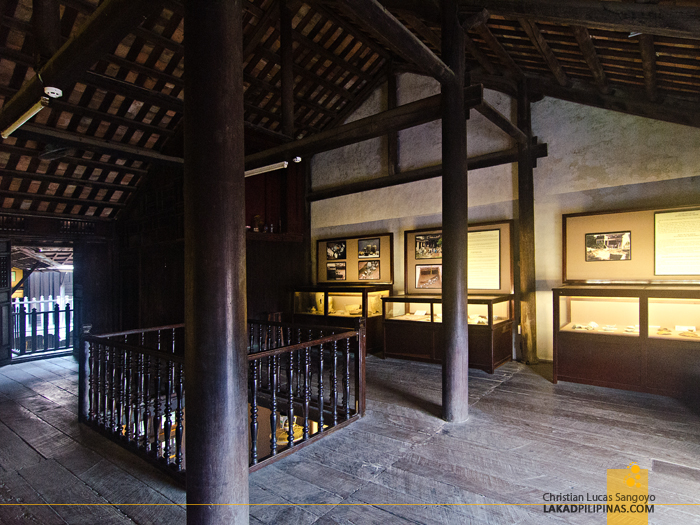


MUSEUM OF FOLKLORE
ADDRESS: 33 NGUYEN THAI HOC STREET, HOI AN | OPENING HOURS: 7:00AM-9:00PM | ENTRANCE FEE: USE STUB | GPS: 15.876298, 108.329830
Turning two blocks towards the Thu Bon River, we entered the largest wooden domestic structure in Hoi An. It’s so huge, it fronts two parallel streets, Nguyen Thai Hoc and Bach Dang. Inside this old house is the Museum of Folklore, which was next on our list.
Inaugurated in 2005, it is the first museum showcasing the intangible culture of Vietnam. The ground floor is made solely for performance art, focusing on Hoi An’s culture and folklore, while the second floor houses its relic pieces. Numbering to almost 500 Hoi An displays, these are classified into four distinct categories, folk shaping art, folk performance, traditional village relics, and traditional folk lifestyle
Impressive as the displays were, as with the Trade Ceramics Museum, we actually enjoyed the museum’s architecture more than its content.



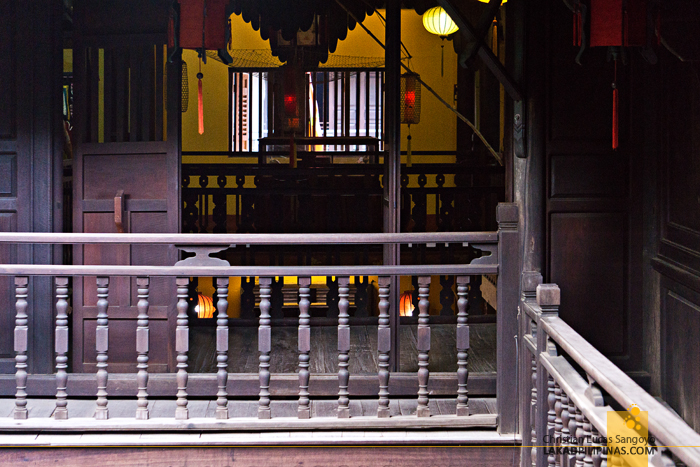
MINH HUONG ANCESTRAL HALL
ADDRESS: 33 NGUYEN THAI HOC STREET, HOI AN | OPENING HOURS: 7:00AM-9:00PM | ENTRANCE FEE: USE STUB | GPS: 15.877751, 108.331665
Twilight was upon us when we entered the Minh Huong Ancestral Hall. Located back at the busy Tran Phu Street, we chanced upon this place while looking for Anthony Bourdain’s banh mi recommendation in Hoi An, and since it was almost evening and we still have a spare ticket left, we went in with no qualms.
The temple was built by the Minh Huong people, 17th century Hoi An settlers from China after the Ming Dynasty fell, to worship the Thien Hau Holy Mother, the God of Earth, and the God of Fortune. Typical of Chinese temples, it has all the usual trappings of dragon sculptures, red lanterns, huge porcelain jars, and oriental prints adorning its walls.




THE JAPANESE COVERED BRIDGE ~ CAU CHUA PAGODA
ADDRESS: 33 NGUYEN THI MINH KHAI ST., HOI AN | OPENING HOURS: 8:00AM-9:00PM | ENTRANCE FEE: USE STUB | GPS: 15.877139, 108.325973
Our final stop for the evening, or rather, our final stop the previous evening, was the Cau Chua Pagoda or the famous Japanese covered bridge in Hoi An. This should’ve been the climax for a tour of Old Town’s museums, but we went ahead during our first day to see it. Talk about low EQ.
The bridge was built in 1593 to cross a stream from the Japanese Quarter towards the town’s Chinese Quarter. It was roofed to also provide shelter for the weather. Above its doors, three Chinese characters read “Lai Vien Kieu” or Bridge for Passengers from Afar.
On one of its side sits two dogs, representing the year it was built on the Chinese calendar, and on the other end, two monkeys, signifying its year of completion.
Small as it is, this is no mere bridge. Off its northern side, above the water, is a small temple dedicated to the Taoist god Tran Vo Bac De, the Emperor of the North. It is said to be the only one of its kind, making it as one of Hoi An’s really iconic places.





























































2 comments
Oo nga. You don't need the ticket to enter the old town. Hehe
ReplyDeleteHaha, we were cheated with Hoi An's entrance fees! :P
Delete